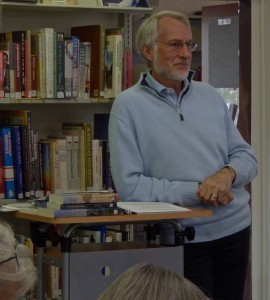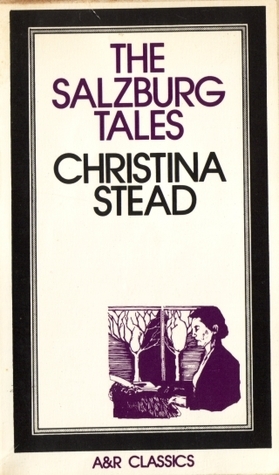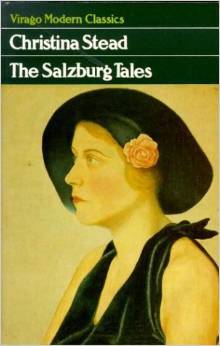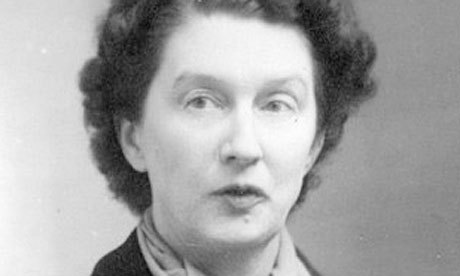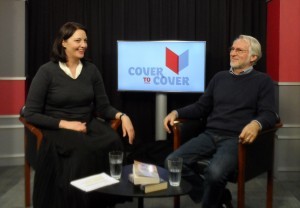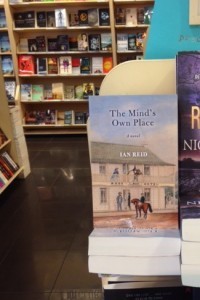Ian Reid's Blog, page 8
November 16, 2015
You need an editor in your head: instalment 2
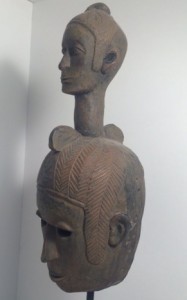 My previous post emphasised how important it is for any writer to incorporate a self-critical attitude into the process of composition, so that you edit your own work as you go. (When I say ‘you’ in this context, I’m giving advice to myself as much as to anyone else!) The end of ‘instalment 1’ foreshadowed the point that the editor in your head should keep a watchful eye on three aspects of your writing: content, structure and texture. I’ll explain now what these involve. My focus here is on literary creation but most of the underlying principles are adaptable to the writing of essays, professional reports or journalistic articles.
My previous post emphasised how important it is for any writer to incorporate a self-critical attitude into the process of composition, so that you edit your own work as you go. (When I say ‘you’ in this context, I’m giving advice to myself as much as to anyone else!) The end of ‘instalment 1’ foreshadowed the point that the editor in your head should keep a watchful eye on three aspects of your writing: content, structure and texture. I’ll explain now what these involve. My focus here is on literary creation but most of the underlying principles are adaptable to the writing of essays, professional reports or journalistic articles.
Looking self-critically at the content of your work should include a wide range of things. In the case of novel-writing, for example, content covers all the events and settings and situations, all the interactions between characters. Factual mistakes and inconsistencies easily creep into a draft, and need to be spotted and fixed before they become fatal flaws. This is vital in historical fiction: have you avoided anachronisms? Would this person have said or done that in those circumstances? Exploring countless such practical questions was part of the research for my latest novel, The Mind’s Own Place. How long did a coach journey take from London to Liverpool in 1833? What songs and hymns might a family in rural Essex sing at home in the 1840s? At about the same date, what were the everyday material realities of working-class existence in a Potteries town, and what were conditions like in certain English prisons for convicts awaiting transportation?
Beyond those material considerations, achieving a credible semblance of reality must also involve the use of authentic, appropriate language – an equally fundamental part of the content of your work. As a novelist who specialises in evoking times past in various locations, I’m particularly conscious of a need to persuade readers that my story is rendering accurately how people spoke and wrote in a given period and place: characteristic turns of phrase, conversational habits – these should give an insight into the way they thought or felt, often different from what we’re used to today. For The Mind’s Own Place this was a tough challenge because the action moves through several regions of Victorian England and then to Western Australia, with characters not only from different places but from different social classes – so their speech patterns are quite diverse. Linguistic accuracy isn’t a pedantic matter if you want your story’s content to ring true.
The second aspect of your work that needs editorial scrutiny as you write is its structure. An interviewer once asked film director Jean-Luc Godard: ‘Surely a story must have a beginning, a middle and an end?’ Godard replied, ‘Yes, but not necessarily in that order.’ So at an early drafting stage you ought to consider carefully whether you’ve chosen the best starting-point for your story, and whether the sequence of chapters maintains interest.
It’s important to pause over other structural questions as you go along. Does the point of view achieve the scope you want? What if you were to filter part of the narrative through a different character? Is there anything superfluous or cumbersome in the arrangement of parts? Discarding chunks of what you’ve written can be painful, but if an episode doesn’t earn its place you may have to reach for the editorial knife. Conversely, is anything missing that ought to be there? Quite late in the process of writing The Mind’s Own Place I reluctantly decided an additional scene was necessary to shed more light on the relationship between two characters. I now think this extra chapter is one of the best things in it, but if there hadn’t been a vigilant editor in my head I’d have overlooked the need for it.
The third area for editorial focus is the texture of your writing – the style, the tone, the rhythms in your prose. Have you avoided clichés, verbosity, adjectival overload? Is some of the phrasing too repetitive? Are there descriptive passages that need to be enlivened? (“Don’t tell me the moon is shining,” said Chekhov; “show me the glint of light on broken glass.”) Are you sure about the grammar and punctuation? Is your use of dialogue always functionally justified?
One way of paying attention to the rhythmic balance of sentences is reading passages aloud – “giving voice to print.” When working on a new novel, I’ve always read an early draft out loud to a discerning critical friend – and the same again when it’s more fully developed. With The Mind’s Own Place these test readings not only produced thoughtful comments from my friend but also allowed the editor in my head to hear any false notes, any awkward phrasing.
No doubt this list of things to keep in mind makes the writing process seem arduous. So it is. Anyone who imagines that perfect prose will flow effortlessly is not serious about the craft of authorship. “I work like a pack mule,” said the Russian writer Isaac Babel, “but it’s my own choice. I’m like a galley slave who’s chained for life to his oar but who loves the oar… I go over each sentence, time and again. I start by cutting all the words it can do without.”
One of the secrets of successful writing is not to be too easily satisfied with what you write, and to keep listening to that editor in your head.
The post You need an editor in your head: instalment 2 appeared first on Reid on Writing.
November 2, 2015
You need an editor in your head: instalment 1
In younger days I used to think that producing written work of good quality would get easier and easier with increased experience. Wrong! The more we know about writing, the higher we set the bar for ourselves. Gradually acquiring a fuller awareness of what first-rate work demands, we become more exacting. After decades of publication, I still find that writing well remains a real challenge – but at least I now recognise how important it is to keep an editor in my head.
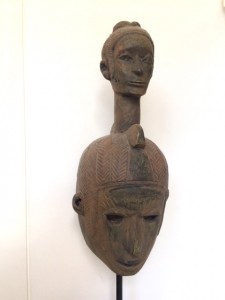
Guinean face masks, Baga Tribe
Inexperienced writers commonly misunderstand the nature and scope of editing. Shouldn’t it wait until the end of the main writing process? No. Shouldn’t it be left to an expert professional employed by the author or the publisher? No.
Experience has taught me that we must edit our own work as we go.
This doesn’t mean fussing over every sentence before we permit ourselves to move on to the next, but it does mean trying to write with a double consciousness, so that the creative impulse goes hand in hand with a critical awareness. Why so? Unless there’s an editor in your head as you write, scrutinising details while simultaneously keeping the larger picture in view, it’s likely that the way you shape your work will undervalue two fundamental things: engaging the interest of readers and maintaining their confidence.
Of course the first reader you must impress – not counting loyal friends, who will usually find it hard to be frank about your manuscript – is a prospective publisher. If you don’t score a success there, other readers will never materialise; and if your work isn’t already highly polished when you submit it, the publisher won’t give it a positive reception.
Even if you succeed in getting past first base, gone are the days when you could rely on a publisher’s editor to tidy it all up for you. Of course there are some highly skilful professional editors out there. (One substantial benefit of being in the UWA Publishing stable is that two excellent editors have worked with me to ensure that every detail in the final version of each of my novels is as polished as I can possibly make it. I’m indebted to Linda Martin for help with The End of Longing and That Untravelled World, and to Nicole Young for help with The Mind’s Own Place.)
You may be lucky enough to get your work not only accepted but also put into the hands of a really astute, diligent editorial person. But you can’t rely on that. The book industry faces financial challenges these days, and hard-pressed publishers sometimes cut corners (though mine doesn’t, fortunately). So if you haven’t taken all possible care with your writing, it may go forth into the world in a form you’ll later regret. Having something in print should be a happy experience, but the exhilaration will soon evaporate if reviewers and readers are turned off by defects that scrupulous editing should have fixed.
The principle of incorporating an editorial attitude into our own writing is just as relevant to an advanced practitioner as to a novice. It means spending a lot of time meticulously checking and revising what we’ve drafted. If we steam ahead with a first draft, never hesitating, we may eventually find we’ve gone so far down the wrong road that it’s almost impossible to retrieve the situation. On the other hand, anxiously fiddling with every sentence as we go can be an inhibiting compulsion, which never allows a creative momentum to develop. So it’s a matter of balance.
The editor in your head should keep a critical eye on three aspects of your writing: its content, its structure and its texture. In a sequel to this post I’ll explain what I think these should involve…
The post You need an editor in your head: instalment 1 appeared first on Reid on Writing.
October 19, 2015
“Polluting the well of history”? Writing fiction about times past
In a preface to his historical novel Ivanhoe, Sir Walter Scott wondered whether purists might have misgivings about this kind of writing. Would it raise a concern that by “intermingling fiction with truth, I am polluting the well of history with modern inventions, and impressing upon the rising generation false ideas of the age which I describe”?
Scott wasn’t seriously anxious about this, but two centuries later the genre of historical fiction still troubles some historians. Paul Lay, editor of the magazine History Today, declares sternly that it’s “no substitute for the real thing.” He adds this dismissive harrumph:
There’s no great harm in reading historical novels, nor writing them, but if anyone wishes to understand history, in all its complexity, they should read ‘real’ history and then they should write it.
I’d like to think – but of course I would, wouldn’t I? – that my own fiction does reveal some of the complexity of ‘real’ history. However, I recognise that certain questions shouldn’t be brushed aside. Do novelists have a right to modify facts drawn from times past? If real people and events are involved, shouldn’t there be constraints on the freedom to invent? What is a writer of historical fiction trying to achieve anyway? Is there a presumptuous intention to surpass the work of scholars and offer a superior kind of truth about the past?
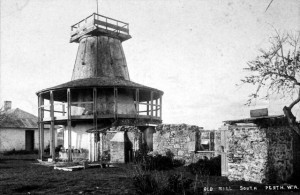
The Old Mill c. 1890, showing Satan Browne’s renovations
Exploring issues such as those was one aim of the research project on “History’s Grist and Fiction’s Mill”, for which the State Library appointed me the 2015 J.S. Battye Memorial Fellow.
During my tenure of the Fellowship I’ve dug around in various archival materials (including sources for some works-in-progress), read various Western Australian publications, and reflected on the processes of writing historical fiction – my own (The Mind’s Own Place in particular) as well as that of several other authors.
One outcome of the project has been an illustrated public lecture, now available on the website of the literary magazine Westerly. This version doesn’t include the lively panel discussion with Amanda Curtin, Jenny Gregory and Davis Whish-Wilson, which followed my presentation; but you can access the text of the talk, with a selection of accompanying images, here.
The post “Polluting the well of history”? Writing fiction about times past appeared first on Reid on Writing.
September 23, 2015
“Finding Your Voice” as a Writer?
In school classrooms and creative writing courses, apprentice writers are often told they should aim for a distinctive style that expresses their own unique view of the world. Be true to yourself (so the advice goes) and you’ll discover your real “voice.”
I don’t quite agree with that. I’d say you should be cautious about the notion of “finding your voice” as a writer. Yes, to be sure, mature writers have usually managed to develop a recognisable tone or style – a particular way of writing that becomes familiar to readers of their work; but on the other hand, this can take quite a while to emerge. And besides, many writers succeed in more than one genre. Some move from poetry to fiction, for example (as I’ve done). Some write for both the stage and the page, or for young readers and also for adults, and so on. Different voices, different authorial selves.
This was the theme of a workshop I conducted last weekend at the Toodyay Public Library as part of the Avon Valley Literary Festival. My session was titled “Finding Your Voice as a Writer: Poetry or Prose?” – but I began by saying that it was a somewhat misleading label, not to be taken at face value.
A writer rests his voice while his workshoppers labour over a task.
[Photo by Amanda Curtin]
Perhaps an experienced author and mentor could help you work out whether a particular form or genre suits your talents best – but it would take much more than a single session to do this. All that a workshop like the one I conducted in Toodyay can do is encourage participants to explore together a few things that may be worth keeping in mind while gradually developing (over a longer period) a sense of their potential literary direction or directions. A variety of simple writing exercises should help to loosen up the creative muscles and make the act of writing a bit more supple and flexible.
“Poetry or prose?” Well, that’s also a misleading question, a false antithesis. Poetry and prose are certainly not opposites, and sometimes they may overlap. The contrasting categories are actually prose and verse. This isn’t a mere academic quibble; it’s basic and important. In verse, lines don’t go as far as the margins; in prose they do. Poetry is able to inhabit either verse or prose. You can have prose that is poetic, and verse that isn’t. Consider this:
I put my hat upon my head
And walked along the street.
My hands were in my pockets.
My shoes were on my feet.
That’s verse – but far from poetic. It’s in every sense pedestrian, a silly little jingle that strings together dull statements devoid of memorable images or ideas. The lines are rhythmically regular and there’s a pattern of rhymes – but such things don’t create poetry.
In contrast, some prose can have all the vital qualities poetry – startling and nuanced imagery, unforgettable turns of phrase, haunting rhythms, a compressed blend of thought and feeling… I quoted an example from Andrew Greig’s book The Loch of the Green Corrie in an earlier blog post on poetry and prose.
Nevertheless, poetry more often inhabits verse. Why? Think about the word “verse”: it comes from the Latin for a line, a row, a ploughed furrow. It’s connected to the verb meaning to turn. So on the written page, because verse keeps turning back abruptly to start another line – to plough another furrow of words – those line breaks produce pauses, slowing a reader down. They give emphasis to rhythmic patterns of words. They highlight visual features of the phrasing – images and figures of speech. They direct our attention (often in small, subtle ways) to qualities that are inherent in the language but are more likely to be overlooked or underdeveloped in the continuous flow of prose.
“Finding Your Voice as a Writer: Poetry or Prose?” – the question is slightly malformed. It’s better to think about the potential of plural voices, about the specific features of verse forms that are especially hospitable to poetry, but also about the ways in which prose can sometimes achieve most of the qualities of a poem.
The post “Finding Your Voice” as a Writer? appeared first on Reid on Writing.
September 9, 2015
Christina Stead’s The Salzburg Tales
From time to time I post my thoughts about literary masterworks first encountered a few years back that now seem worth revisiting. This blog has previously carried reflections on Peter Carey’s early fiction and Kate Grenville’s The Idea of Perfection. Now I turn to a book by another celebrated Australian author: Christina Stead’s The Salzburg Tales, published in 1934 and often reprinted with a “classic” label.
It’s one of the strangest volumes of short fiction produced by any writer from this country. Steeped in the culture of Europe, standing at an oblique angle to the predominant Australian tradition of social realism, The Salzburg Tales is reminiscent of the work of 19th-century romancers and raconteurs like Germany’s Hoffman and Russia’s Gogol, and of much older miscellanies like The Decameron, The Arabian Nights or The Canterbury Tales. As with those story-clusters, what holds Stead’s collection together is not so much the narrative framework (in this case a group of festival visitors taking turns to spin yarns to one another) as a pervasive fascination with the activity of tale-telling itself, with its various roots and ramifications.
In my little critical study The Short Story I’ve described how Stead uses the prefatory sections of her book – Prologue and Personages – to distinguish between different storytelling forms favoured by different individuals. I’ve also remarked that numerous passages in the collection express curiosity about the myriad sources and shapes of fiction. Many of these tales emanate from particular places, particular personalities. A full range is on display, embracing almost every sub-genre of the short story – simple to sophisticated, laconic to grandiloquent.
Storytelling about storytelling: I’ll illustrate Stead’s take on this by discussing “The Marionettist,” the first story of the first day’s round of tales. Its position is significant: it foreshadows distinctive qualities of the forty stories that comprise – along with preliminaries, linking sections and an epilogue – the volume as a whole. (In what follows I’m adapting a commentary I wrote years ago for an encyclopedic tome called Reference Guide to Short Fiction, ed. Noelle Watson.)
Salient in the story’s title, the image of the marionettist aptly represents the kind of literary artist who produces the kinds of stories found in this collection. Overt manipulation of character and plot, free adaptation of traditional narrative motifs, scant regard for psychological realism — these puppeteerings are all recurrent features of Stead’s extraordinary tales.
The narrator who unfolds this opening story is the local Town Councillor. Someone in the group has asked whether “Salzburg always lost its sons to Vienna and the great cities”, and the Councillor’s narrative response begins in a way that seems to situate modern Salzburg in a timeless perspective, as a folktale might: “When winter came round, James’s mother would look out at cloaked figures making tracks in the snow along the Nonnthalgasse beneath black Hohensalzburg, and say: ‘I dreamed last night that Peter and Cornelius knocked at the door on a day like this…’” The iterative implication (“came round … would look out”) suggest that seasonal and narrative cycles are moving in step, and it’s almost as if the tale itself belongs to the mother’s dream trance.
Further affinities with folktale conventions soon appear. We seem close to the familiar three-sons formula when we learn that Peter and Cornelius, the two eldest, have run away from home years before and that the parents fret about the likelihood that James, the remaining one, will soon be lost to them now that he wants to train as a sculptor in Vienna. But the ensuing events give an odd twist to any expectations derived from those seemingly formulaic premises. Although James promises he will return once his studies end, he falls in love with a fellow-student, marries her, stays in Vienna, and is faced before long with parental responsibilities. He makes wooden dolls for his young children, using each new puppet “to tell them a new chapter in an endless story that he made up as he went along, one which sprang naturally out of the events of their daily life, with incidents he read in the newspapers, and memories of his childhood pieced in.” This sounds like a partial account of Stead’s own method of composition — and, again like James, who would recount “ancient themes” from European myth and fantasy, the author of The Salzburg Tales is also fond of the often-told, the legendary, the archetypal.
James eventually decides to establish himself commercially as the operator of a marionette show. The whole family willingly shares the business tasks associated with this. As scripts for his marionettes James invents stories that rework aspects of his family history in extravagant analogies. One of these, “The Pot of Gold” (shades of Hoffmann!), tells how two brothers went out after adventure and were variously reported as lost by accident, or as beggars, while a third brother stayed at home and became an honest butcher” – and so on.
Then, with the kind of abruptness that so often enters Stead’s short fiction, the narrator reports simply: “James left home when he was in his thirty-eighth year.” There’s no warning, no explanation, and no attempt to provide the kind of narratorial meditation that takes up much of Nathaniel Hawthorne’s story “Wakefield”, which tells of a man who leaves home and stays away for years without any evident motive. The family in Stead’s story continues to run the marionette theatre. One of James’s brothers, long-lost Peter, appears briefly on the scene and disappears again. After fifteen years of absence, James casually turns up one day and is surprised that his family is not overjoyed at this reappearance. The story proceeds with a couple more twitches of the narrator’s own marionette strings. This is the first one: “They had no room for James in the house so they rented a small room for him not far away, and he stayed there and did some fancy articles in wood ordered by a shop selling cheap objets d’art. When winter came on he went away from Vienna one morning and his family never heard from him again.” And the second twitch of the marionettist’s strings follows at once, partly repeating the story’s opening sentence (“But James’s mother looked out at the cloaked figures making tracks in the snow …”) and its oneiric motif (she dreams of James’s return) as a prelude to the wanderer’s arrival in his parental home, whereupon he becomes a character in his mother’s tale: repeatedly she “told the women about her son the sculptor who had travelled all over the world.” He, in contrast, continues to withhold any mention of his wife and children “or his marionette theatre, for James knew that she would think a marionette show a come-down for a sculptor”.
In this concluding irony of mild misrepresentation a reader might see again an implicit comment on the narrative method. In a sense, this story wanders just as James does; and although some readers may want to see it as “sculpture” – as immobilised high art – its generic alignment is with the more popular cultural form of the marionettist’s show.
The post Christina Stead’s The Salzburg Tales appeared first on Reid on Writing.
August 26, 2015
The art of interviewing an author
What makes a good media interview? I’ve been chewing over this question lately in the light of some pleasant encounters with expert interviewers. Since my new novel appeared a few weeks ago I’ve had conversations about it for a radio program, for a newspaper article, and now for television. They have all gone pretty well (from my point of view, anyway), thanks largely to the skill of my interlocutors – Tony Howes for Capital Radio. Will Yeoman for The West Australian and Meri Fatin for Westlink TV.
There many sorts of interviews, and the tone varies according to their different purposes. At one extreme the language may be adversarial and even aggressive – e.g. when a political journalist tries insistently to cut through the defensive barrier of a parliamentarian’s formulaic phrases, creating a kind of tension that sometimes reveals (in the public interest, supposedly) more than the interviewee wanted to disclose.
That’s very different from the kind of interview in which I’ve been involved. The point of being asked to chat in a public way about something one has written is presumably to engage the attention of people who have read it, or potential readers. So the interviewer’s role is to win the interviewee’s trust, make him or her think hard about aspects of the writing process and the finished product, and elicit reflective responses that have will have some value when conveyed to others on the page or the airwaves or the screen.
By its nature, a literary work is likely to have enough complexity to lend itself to animated discussion – that’s one reason why book clubs are popular. So comments from the person who wrote the book usually have some interest, to judge from the fact that I’m getting invited as a guest to converse with various groups whose members are reading The Mind’s Own Place. An author’s remarks can’t control the way others interpret a piece of writing, but will often provide particular insights.
A well-conducted media interview helps extend that kind of conversation to a wider readership. What does “well conducted” mean in this context? For one thing, I’ve been fortunate that each of the interviewers mentioned above has been thoroughly prepared: they’ve not only read the book but also thought about it intelligently, and so their questions have been shaped in a perceptive and stimulating way. It’s no surprise that Tony, Will and Meri are adept at the art of interviewing an author, since all have extensive media experience and a deep knowledge of the creative arts.
Engaging the confidence of an interviewee isn’t something that happens by chance. For instance, a few days before the most recent of these recorded conversations Meri Fatin spoke with me informally and at some length, by arrangement, about her impressions of the novel, about some issues it had raised in her mind, and about things she’d like to ask me when the cameras were rolling – so by the time the studio session arrived I knew generally what to anticipate. Thanks to her professional attention to detail, I was able to talk with her in a relaxed way – at least that’s how it felt to me; you can judge for yourself (courtesy of WritingWA, which makes the video available in this way) by clicking here to view our conversation on Youtube.
The post The art of interviewing an author appeared first on Reid on Writing.
August 12, 2015
Support for solitaries
 Although the act of writing is solitary, its ultimate purpose is to communicate – which a lone individual can’t achieve unaided. Reaching a wide readership requires concerted effort. So three cheers for organisations that give practical support to writers!
Although the act of writing is solitary, its ultimate purpose is to communicate – which a lone individual can’t achieve unaided. Reaching a wide readership requires concerted effort. So three cheers for organisations that give practical support to writers!
These are difficult times for the book industry. Most authors, publishers and retail outlets are struggling, and it would be hard for some of us to keep our heads above water without the reliable ancillary service provided by various support organisations.
At a national level several bodies do indispensable work, most notably the Literature Board of the Australia Council, the Copyright Agency, and the Australian Society of Authors. I’ve had good reason to be grateful to all of these. But it’s at least equally important to find encouragement close at hand, in one’s own community. Even a writer who isn’t inclined to be gregarious will sometimes be glad of assistance from a group of other writers.
For those of us who pursue our literary vocation in Western Australia, at a daunting distance from the HQs of national organisations (most of whose facilities, meetings etc. are beyond reach), there’s a special value in the support that locally-focused groups can give. Several of these operate in and around Perth, where I live. Having been involved with most of them at some stage as member, workshop leader, guest speaker or attendee at events, I respect what they do and I’m grateful for their contributions to the literary scene here.
Among the organisations that come particularly to mind, two have now been around for a combined total of 50 years, which is all the more admirable in view of their heavy dependence on volunteers. In the hills east of Perth, the KSP Writers Centre has provided a range of development activities for 30 years, while the Peter Cowan Writers Centre is now marking the 20th anniversary of its similar work in the northern suburbs. Each recognises in its name a significant WA fiction-writer from the past – Katherine Susannah Prichard and Peter Cowan. Both Centres have enjoyed loyal backing throughout this period from stalwarts who contributed to their establishment.
Within the last couple of years I’ve given an invited talk at KSP and a workshop on editing at PCWC, and I could see at first hand what a nurturing ethos both groups have created for their members.
The literary organisation with the longest and proudest tradition of service to writers in this state is the WA branch of the Fellowship of Australian Writers, founded in 1938. As a member of FAWWA, I’ve given presentations (e.g. to the Book-Length Project Group), attended readings (e.g. by the Well-Versed poetry presenters), listened to notable fellow-writers such as Amanda Curtin and Nicholas Hasluck talk about their recent work, and chatted with many people at informal social gatherings. Through these interactions I’ve struck up friendships, received (and shown, I hope) collegial support, acquired useful information (in particular from the online newsletters), and generally felt the value of belonging to a literary community that is equally welcoming to tyros and eminent figures. The positive spirit engendered by FAWWA owes a lot to the energy of its President Peter Bibby, its Past President Trisha Kotai-Ewers, and its Administrative Officer Pat Johnson..
It takes nothing away from the work of FAWWA, KSP and PCWC to say that the advent of WritingWA has brought a higher level of statewide coordination, strategic thinking and energetic advocacy to our writers. It has many member organisations, including the three I’ve just mentioned, and represents every link in the whole book industry supply chain. WritingWA has been especially active in ensuring that regional writers and readers don’t miss out on services available to their counterparts in urban areas. For a state as large as WA, that’s no mean feat. The Board of Writing WA (chaired by Dennis Haskell) has worked hard to give CEO Sharon Flindell and Regional Engagement Officer Deidre Robb plenty of scope for their excellent efforts.
I admire the enterprising way in which WritingWA manages to maximise the range of practical benefits it offers through active partnerships with other local and national bodies. Here are five examples from my own experience:
The strong working relationship between WritingWA and Westlink TV has resulted in an outstanding publicity vehicle for writers – Meri Fatin’s monthly “Cover to Cover” program, showcasing Western Australian writers and reaching out to many regional locations. As Meri’s interview with me is about to be telecast (next week), I’m particularly conscious at the moment of the value that this service brings to writers and readers.
WritingWA works closely with the organisers of WA’s literary festivals. As a guest of the Perth Writers Festival in recent years and Geraldton’s Big Sky event in 2013, I saw how productive this kind of liaison can be, and I’m sure I’ll see further evidence of it next month as a featured writer at other regional festivals in the Avon Valley and the Kimberley.
Last year I took part in a thoroughly worthwhile Market Development Skills Workshop run jointly by WritingWA and the Literature Board of the Australia Council. This was an exemplary partnership, and I’m sure other participants gained as much from it as I did. It helped me to think in more practical ways about commercial aspects of the work I do, and this has been a useful focus in the lead-up to the release of my latest book.
At a time when national newspapers and magazines are generally reducing the space allocated to literary reviews, I and my fellow writers have good reason to thank WritingWA for the way it links up with The West Australian to ensure that the paper maintains a good prominent coverage of books produced by authors in this state (including recently Will Yeoman’s interview-based article on my new novel).
WritingWA collaborates with public libraries to assist with payment for writers who give talks and readings in libraries. I’ve been glad of the fees generated in this way. (Incidentally, the fact that the WritingWA office is located in the State Library building, where I’m currently working on my Battye Fellowship project, has made it convenient for me to make more frequent personal contact with its staff. They are just a few paces away from the Library Theatre where I’ll be giving a public lecture next week.)
Through these and other leveraging partnerships, WritingWA extracts plenty of value from every dollar of funding it receives. At present it is holding its breath (like other literary organisations in WA) as it awaits the result of crucial funding applications. I trust it will receive substantial government grants so that writers and the wider public can continue to benefit from its vital work.
The post Support for solitaries appeared first on Reid on Writing.
July 29, 2015
Slice and dice: a stylistic fad?
 An irritating feature of a few contemporary Australian novels is their fondness for repeatedly chopping up sentences into separate fragments. It’s as if the authors (or editors) think that readers generally have such a severe Attention Deficit Disorder that prose must be doled out in very small pieces.
An irritating feature of a few contemporary Australian novels is their fondness for repeatedly chopping up sentences into separate fragments. It’s as if the authors (or editors) think that readers generally have such a severe Attention Deficit Disorder that prose must be doled out in very small pieces.
A recent post of mine about books set in the World War 2 period gave one example. Although Steven Carroll’s A World of Other People is impressive in some respects, I remarked that “in paragraph after paragraph nearly all the sentences are so short that the result can look like a kind of stylistic stammer, awkward and unproductive, yet with a portentous air.” I quoted a passage to illustrate this.
Since then I’ve read Mark Henshaw’s The Snow Kimono, in which many pages are full of staccato phrases. Here’s a random sample – the opening paragraphs of one chapter:
In those four months: the village census complete. The families’ names on each house. In white paint. The number of occupants. Here, what’s this? Your identity papers. Keep them on you. Then the random late-night checks. Come with me. No, not you – you. Take the youngest son. Next day, show the father what’s in the lattice-covered ditch. Trussed, bent over. Returned to him the following evening. The curfew unbreakable. The cost too great. A sheep. Two. From someone else. It helped them think.
The schoolhouse built. Attendance compulsory. Ages six to twelve. Including girls. The notices distributed. For each class, a morning roll. No exemptions Every school day. Otherwise they risked a soldier’s heavy rap. A lesser fine. But still too much Where’s Fatima? She’s sick. Let me see.
And so. It goes. On… Presumably the aim is to create suspense, but the continual slicing and dicing can seem gratuitous and tedious.
There’s nothing inherently wrong with an occasional use of stand-alone short phrases when they plainly serve a narrative or descriptive function and are handled with restraint. Stephen Daisley’s Coming Rain interrupts or curtails the ordinary structure of sentences from time to time in order to convey hesitant movement within a tense build-up towards action – as on the first page of the novel, where a dingo is stalking a mob of roos:
The last of the day’s sun and the first of the four moons rising above the bloodwoods. The grey kangaroo, upwind of her, grazing quietly across a long, flat valley fringed with desert oak. They were deliberate, selecting and nibbling the beardy grasses. Their slow, graceful feeding in the twilight. They moved through saltbush and into a grove of long-leaf paperbarks.
That kind of writing may sometimes risk seeming mannered, but in the quoted paragraph it has an imagistic quality, purposeful and skilful.
Similarly Rohan Wilson’s writing in To Name Those Lost, a story of 19th-century rural Tasmania, makes selective use of abrupt impressionistic phrasing to vary the rhythms of his prose. For instance, this is Thomas Toosey, tied up in a barn during the night, watching for the first light of dawn and trying to devise some way of escaping:
In the quiet the cows called and Toosey waited to where the light shot through the wall like sheets of silk, to where he could see by it. Bailed hay mouldering in the stall. Articles strung on nails. Piled by the wall were tools for working the soil and tools for working wood. He stood awkwardly by snaking up the post and shuffling his feet closer. Once he was upright he could circle around the post in his tethers. His eyes jumped about for something of use. He would not be kept here. His boy needed him.
And again in the midst of the following passage from Wilson’s novel there’s a simple truncated phrase, which is all the more striking because it stands on its own in contrast to the longer descriptive sentences that precede and follow it:
They descended out of gum forest, Flynn and his daughter, and followed the rails across the flatlands west of Longford. In the late dark the stars hung like points of ice, looking singularly cold and distant. The whole moon steam-white. They walked and Fitheal Flynn sang along a few bars of a taverner’s ballad he knew from the old country, tapping his stick to keep time.
If, as in these examples from Wilson’s and Daisley’s novels, the departure from standard syntax occurs within a context of stylistic variation, the effect can be powerful. If it’s unduly obtrusive and repetitive, as in parts of Henshaw’s and Carroll’s novels, I find it tiresome.
Are only male writers drawn to this practice? And is it just a recent thing in Australian prose, or does it stem from the experimental style of Patrick White? He used disruptive syntax in a judicious way, I think, and can hardly be held responsible for any excesses of latter-day practitioners.
The post Slice and dice: a stylistic fad? appeared first on Reid on Writing.
July 15, 2015
Launched!

That’s not a launch…
Last night my new novel The Mind’s Own Place was the occasion for a very pleasant celebration in the Lawrence Wilson Gallery under the auspices of Perth’s WinterArts Festival.
I’m grateful to a goodly contingent of friends for attending, to fellow-novelist Brenda Walker for her generous words of praise in launching the book (her speech will soon be posted on this website’s page for The Mind’s Own Place), and to my publisher UWAP (especially to Terri-ann White and Charlotte Guest) for hosting the cheerful evening.
About 18 months ago I posted some thoughts about book launches, noting that even authors themselves aren’t unanimous about the value of these events. I quoted the sceptical David Malouf (so successful that he can afford to be dismissive), who shrugs them off as as “exercises in vanity,” and Miriam Cosic who says they’re an endangered species – “one of the silent casualties of shrinking profits and digital publishing.”
It’s understandable that some will see such events as expensively indulgent, seldom covering the cost of catering etc. Naturally I incline towards the more optimistic opinion that, though book sales on the night may be modest, old-style celebratory launches can still create ripples of publicity from which the book will benefit.
Anyway, I enjoyed myself immensely and the assembled company seemed to do so as well. And yes, a decent number of books were sold and signed. Heartfelt thanks to all who contributed to the evening’s success.
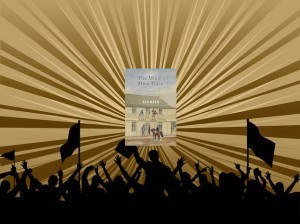
T H I S is a launch !!
The post Launched! appeared first on Reid on Writing.
July 1, 2015
Releasing a new novel
When we say a book is released we mean of course that it has become publicly available – but release also carries a sense of being set free after a (sometimes long) period of confinement. Prisoners who’ve served their sentence get released. Pent-up emotions can be released. A “lock-up”, a closed briefing session, precedes the release of a government’s budget.
Yesterday my new novel The Mind’s Own Place officially emerged at last into the marketplace, and so I feel elation, yes – but also some empathy with two of its main characters, who get transported to the Swan River Colony as convicts and eventually gain their “ticket of leave” (the first step towards conditional freedom).
After their periods of incarceration – first in England, awaiting transportation; then on the voyage out; and finally behind the grim walls of the “Convict Establishment” (Fremantle Prison) – to be set at liberty again must have felt exhilarating.
My book, too, has been cooped up for what seems a very long while since its completion, awaiting this scheduled release. Now, like those discharged inmates, it must make its way in the world, hoping for a good reception but knowing that a ticket of leave can’t guarantee this.
There will be a celebratory launch, with the usual book signings etc., on 15 July. For details of that event and others coming up, click here. For information about the book on my publisher’s website, click here. For an interview-based article on it in The West Australian, click here.
The post Releasing a new novel appeared first on Reid on Writing.

